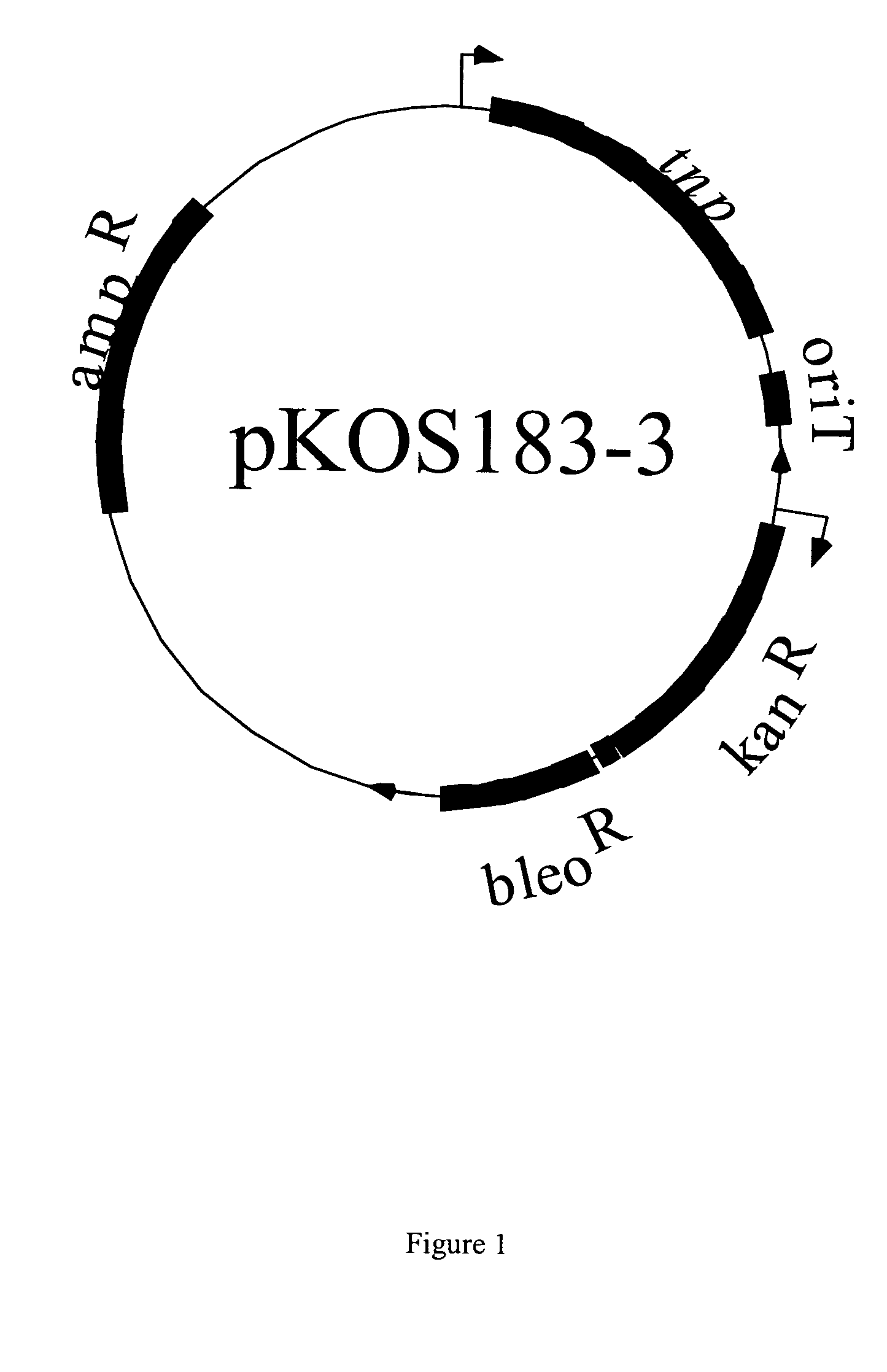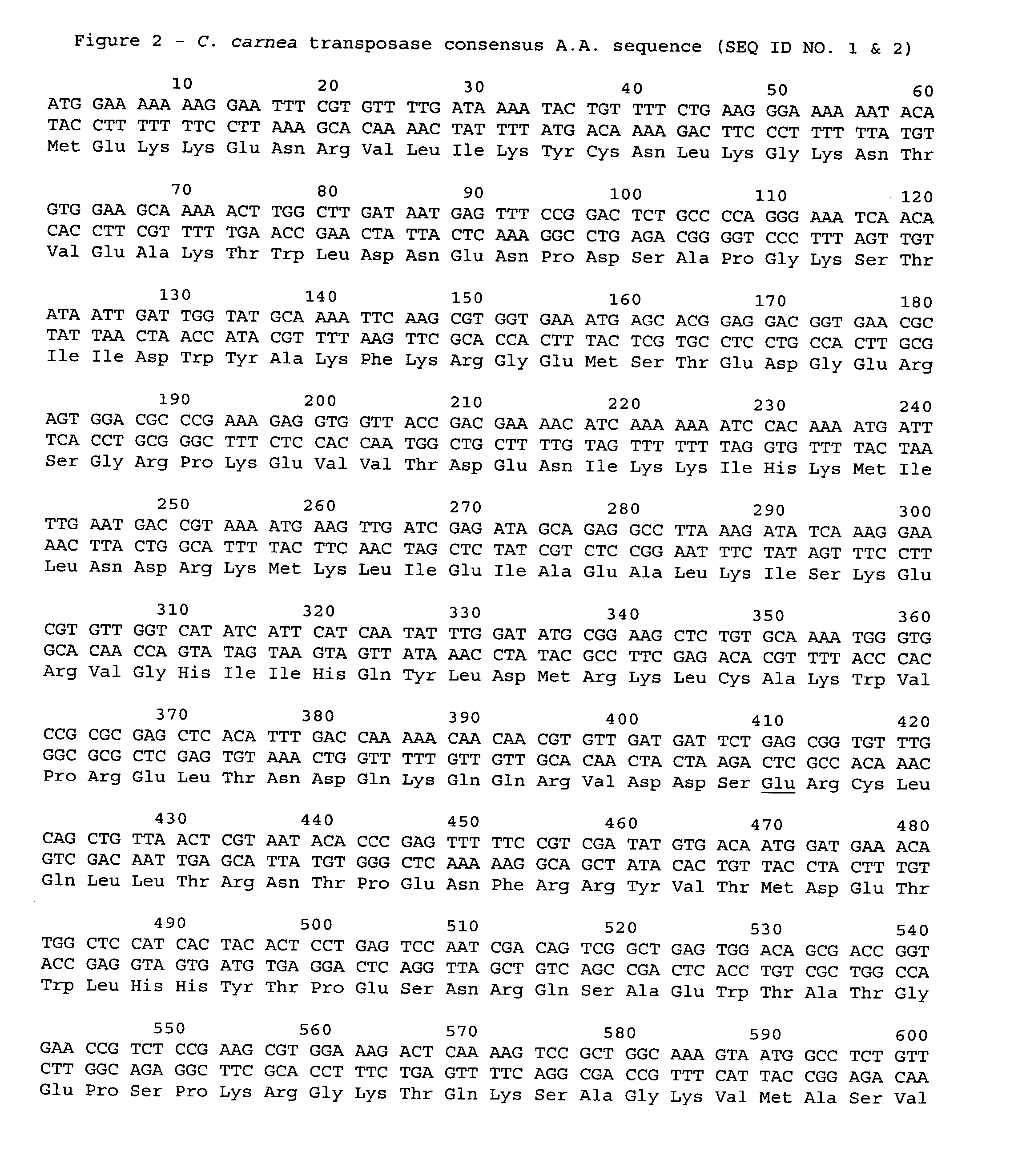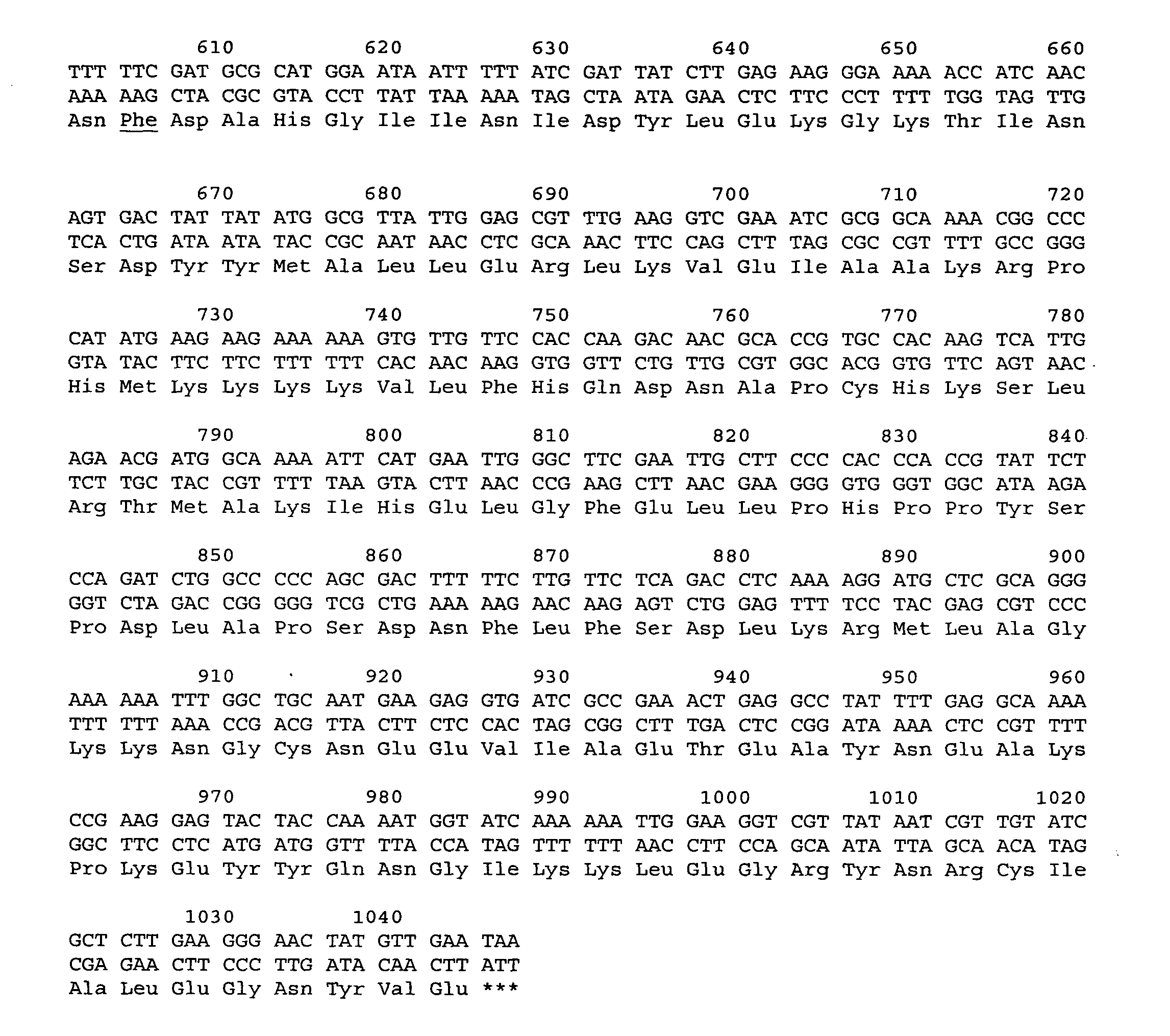Transposon-based transformation system
- Summary
- Abstract
- Description
- Claims
- Application Information
AI Technical Summary
Benefits of technology
Problems solved by technology
Method used
Image
Examples
example 1
Manipulation of DNA and Organisms
[0034](A) Strains. Routine DNA manipulations were performed in Escherichia coli XL1 Blue or E. coli XL1 Blue MR (Stratagene) & DH10B (BRL) using standard culture conditions (Sambrook et al., 1989). Sorangium cellulosum strain So ce90 was used for the transposon insertion.
[0035](B) Manipulation of DNA and organisms. Manipulation and transformation of DNA in E. coli was performed according to standard procedures (Sambrook et al., 1989) or suppliers'protocols.
[0036](C) DNA Sequencing and Analysis. PCR-based double-stranded DNA sequencing was performed on an Applied Biosystems (ABI) capillary sequencer using reagents and protocols provided by the manufacturer. Sequence was assembled using the SEQUENCHER (Gene Codes) software package and analyzed with MacVector (Oxford Molecular Group) and the NCBI BLAST.
[0037](D) HPLC methods. Quantitation of polyketides was performed using a Hewlett-Packard 1090 HPLC equipped with a diode array detector and an Alltech 5...
example 2
[0040]Cloning Chrysoperla Carnea Mariner Transposase Gene
[0041]The Chrysoperla carnea mariner transposase gene was isolated from the genome of the green lacewing fly Chrysoperla carnea by homology polymerase chain reaction amplification. Approximately 2000 Chrysoperla carnea lacewing fly eggs were obtained from Biocontrol Network (Brentwood, Tenn.), and the DNA isolated using the DNA isolation kit from Roche Molecular Biochemicals (Indianapolis, Ind.). After finishing the protocol as recommended, a phenol extraction followed by phenol / chloroform extraction of the DNA were carried out to further clean it up. Using the primers 111-132.5 (AACCATGGAAAAAAAGGAATTTCGTGTTTT [SEQ ID NO:5]) and 111-132.6 (AAAAGCTTATTCAACATAGTTCCCTTCAAGAGC [SEQ ID NO:6]), the nucleotide sequence encoding the mariner transposase was amplified. The Chrysoperla carnea consensus sequence (see SEQ ID NO:1) encoding the transposase was derived from the PCR amplimers generated (which were designated 111-136.7 and 111...
example 3
Mariner-based Transposon Mutagenesis—Plasmid pKOS183-3
[0045]The basic transposon without the transposase gene was constructed by synthesizing an oligonucleotide containing the inverted repeats (111-158.1 CCGAATTCACAGGTTGGCTGATAAGTCCCCGGTCTGGATCCAGACCGGGGACTTATC AGCCAACCTGTGAATTCG [SEQ ID NO:11). The oligonucleotide was denatured and annealed with itself, cleaved with EcoRI, and ligated into the EcoRI site of pBluescriptIISK+, to create plasmid pKOS111-158. Next, the inverted repeat was moved into pSL1190 by cleaving pKOS111-158 with EcoRI, isolating the 70 bp fragment and ligating with pSL1190 cleaved with EcoRI and MfeI to create pKOS111-160. The kanamycin and bleomycin resistance gene from Tn5 were inserted between the inverted repeats of the mariner ends by cleaving pBJ160 with BamHI, making the DNA ends blunt with the Klenow fragment of DNA polymerase I. This fragment was ligated with the kanamycin and bleomycin resistance marker that had been isolated on a˜1.6 Kb EcoRI-BamHI fr...
PUM
 Login to View More
Login to View More Abstract
Description
Claims
Application Information
 Login to View More
Login to View More - R&D
- Intellectual Property
- Life Sciences
- Materials
- Tech Scout
- Unparalleled Data Quality
- Higher Quality Content
- 60% Fewer Hallucinations
Browse by: Latest US Patents, China's latest patents, Technical Efficacy Thesaurus, Application Domain, Technology Topic, Popular Technical Reports.
© 2025 PatSnap. All rights reserved.Legal|Privacy policy|Modern Slavery Act Transparency Statement|Sitemap|About US| Contact US: help@patsnap.com



